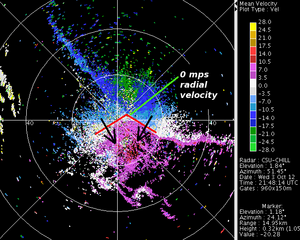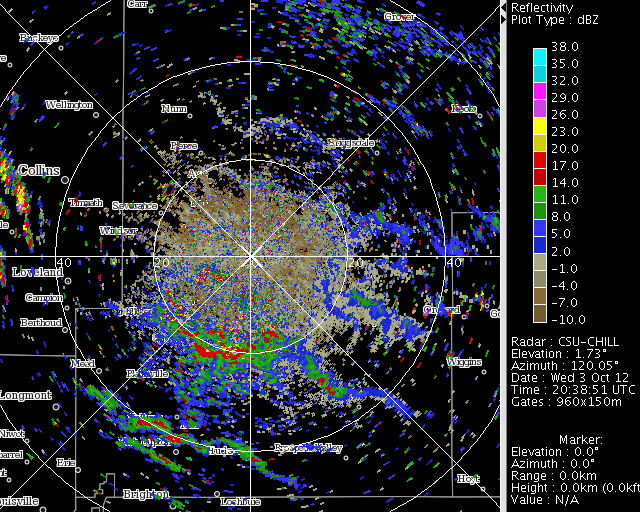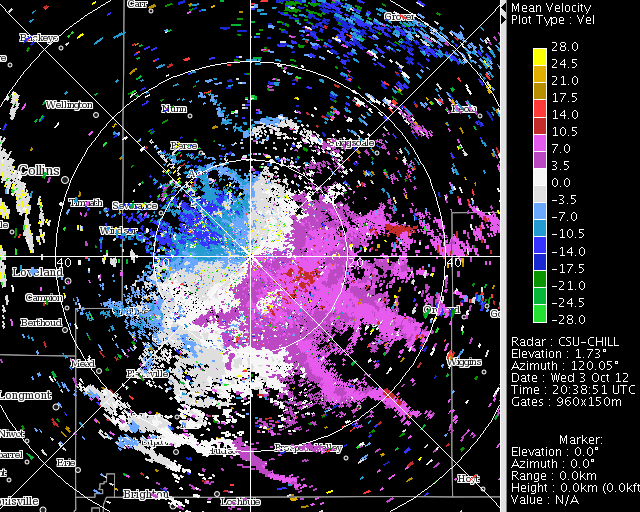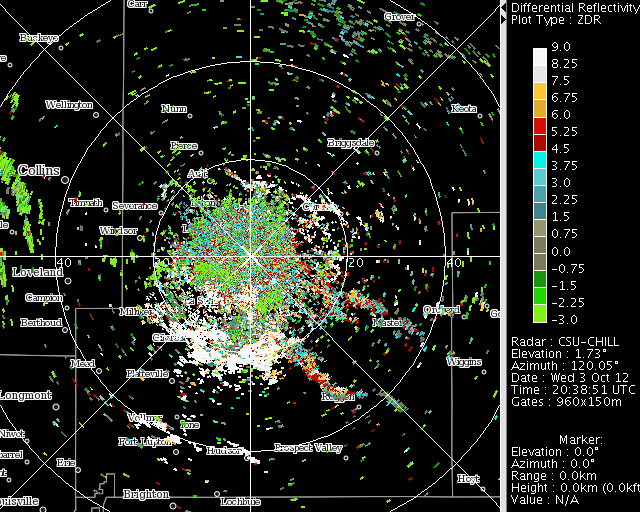Cold frontal passage: 3 October 2012

Radial velocities observed in a 1.2° PPI sweep as a cold front approached the CSU-CHILL radar site on 3 October 2012. The changing orientation of the 0 mps radial velocity line indicates the wind direction shift from northwest to northeast that accompanied the frontal passage. Time lapse images of data collected during the frontal passage have been assembled.
Introduction
A strong cold front passed the CSU-CHILL radar site at 1600 MDT / 2200 UTC on 3 October 2012. No surface precipitation was associated with the frontal passage at the radar. Small areas of virga and weak rain showers were visible primarily to the south of the radar during the hour after windshift associated with passage of the front. PPI scan volumes composed of 4 low elevation angles that repeated on an ~5 minute interval were run as the front passed the radar.
Reflectivity loop
The following image sequence was made from the 1.2° elevation sweeps. The city of Greeley is located on slightly elevated terrain within 15 km range in the southwest azimuth quadrant; it produces a distinctive region of clutter return. The reflectivity of this clutter area increased following the frontal passage. Two speculations may be offered to explain this reflectivity enhancement:
- The temperature inversion associated with the invading cold (and more moist) airmass increased the curvature of the radar beam towards the ground. This increased the intensity of the radar's illumination of the elevated Greeley-area terrain.
- The stronger surface winds accelerated the motions of tree branches, power lines, etc. These motions caused a larger fraction of the ground return's power spectrum to fall outside of the near 0 mps radial velocity band that is suppressed by the signal processor's digital clutter filter.
|
|
||
|
Radial velocity loop
Surface winds were approaching the radar from the northwest prior to the frontal passage. The wind direction shifted to the northeast and increased in strength behind the front.
|
|
||
|
Differential reflectivity loop
Localized areas of positively-enhanced differential reflectivity values were observed at several times as the front progressed through the region. These appeared to have some association with pre-existing areas of distinctly positive values within the general boundary layer echo that were collected by the horizontal convergence in the frontal band. These large (~5 dB and greater) values are typically associated with the backscatter from flying insects.
|
|
||
|
Conclusion
Detailed information on the location and movement of cold airmass boundaries can be obtained by Doppler weather radars when suitable "clear air" scatterers are available. Such observations can be useful for nowcasting purposes, particularly at discrete locations such as airports, large outdoor gatherings, etc.



